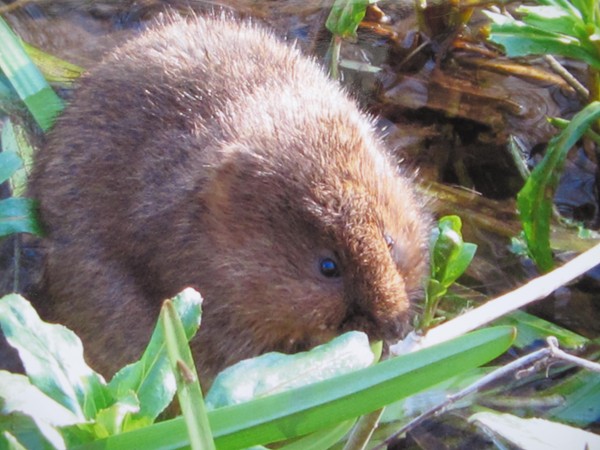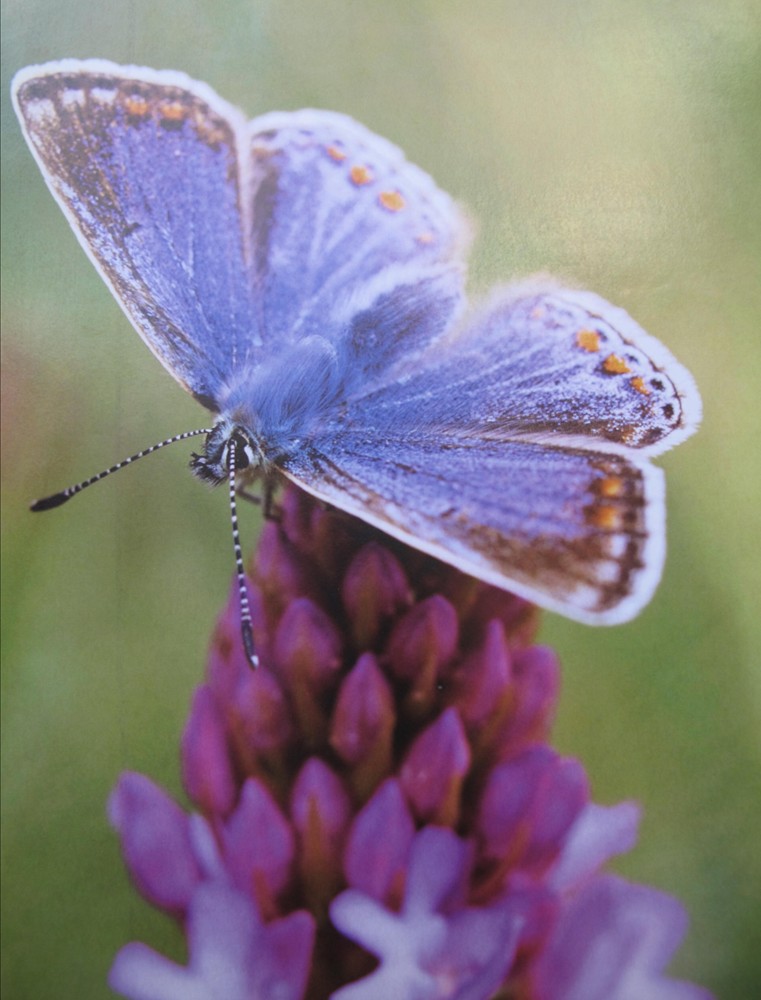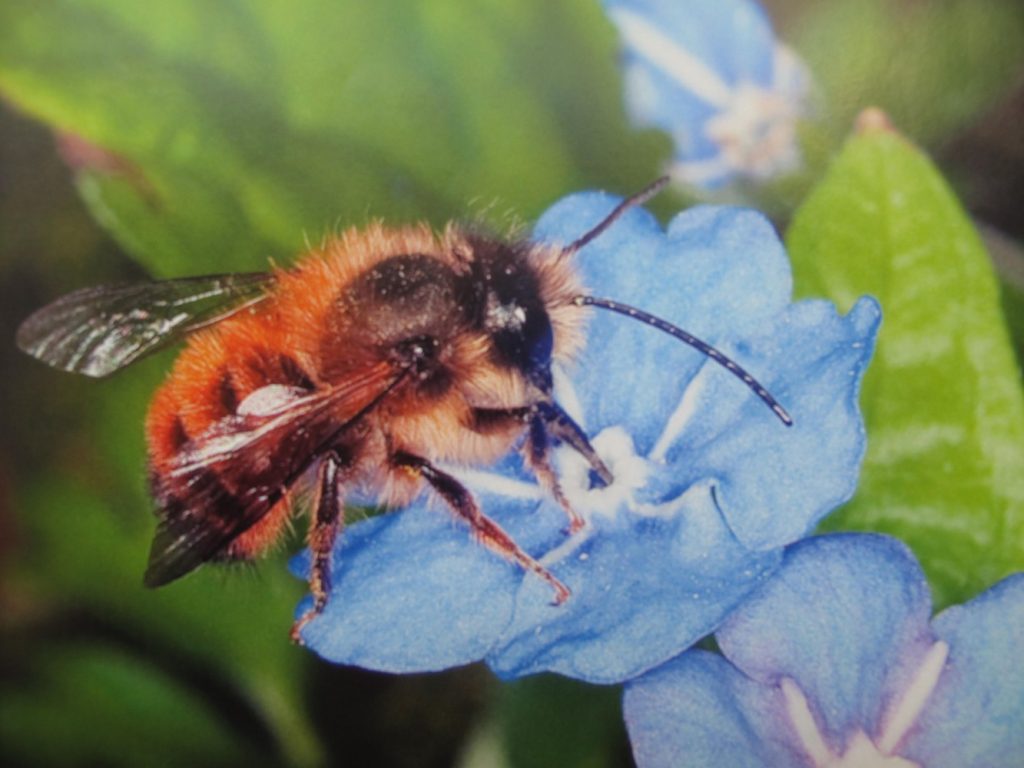
At the beginning of each month, Jan Flamank will create Nature Notes that can be shared online. You can read Jan's notes below, or you can click on each picture to find a page of notes about that topic that you can download.
Be aware though that these pages are in a format that will not work well on small-screen devices such as smartphones or small tablets.
Here are the Nature Notes for June:
Water voles are shy and elusive rodents, and are one of our most endangered native mammals. They live in slow moving, fresh water, but as their numbers had sadly declined by more than 80 per cent in the 1990s, they are now a fully protected species in law.

With a range of focused conservation measures, and huge amounts of work by ecologists, wildlife organisations and volunteers, their numbers have recovered in some areas. But they remain scarce and difficult to see, even in previous strongholds such as the River Wye. I was lucky enough to see and photograph this lovely vole, quietly munching on new waterside vegetation one late April, as I walked by the river into Bakewell.
They are very tidy when they eat, ensuring the stalks are free from mud before munching on it, and they hold the vegetation with dexterous, four fingered front paws. They need to eat about 80 per cent of their body weight every day, and adapt their mainly herbivorous diet to take advantage of the seasonal food available. They will eat berries that grow near water, and may also eat worms and small fish to supplement their green diet when pregnant.
Though competent swimmers, they do not have webbed feet, and because they have no waterproofing on their fur, they only stay in or under water for short periods to avoid getting a waterlogged coat.
Question: Can you identify four reasons why water voles became so endangered, and what can we all do to help their recovery?
This gorgeous, native butterfly is one of my favourites out of all our butterflies. It is small, with a wingspan of only one inch, but it shimmers with such beauty, and I remember trying to count the orange spots on the edge of the wings as an excited, small child.

This lovely butterfly has declined so much it cannot now live up the name of being a common sight. Previously widespread from North Africa to the Arctic, the usual fatal combination of loss of habitat, overuse of pesticides, herbicides and intensive farming have all taken their toll on the Common Blue. More roads and housing also impact negatively on butterflies, along with many other native species.
One of seven species of blue butterflies in Britain, they emerge as adult butterflies from June, and all have very specific plants on which they lay their eggs. Most of these are wild flowers, which are in decline themselves. As ever, if we don’t have a richly diverse plant population, with healthy soil, then the whole food chain suffers.
The caterpillars of the Common Blue feeds mainly on clover, birdsfoot- trefoil and rest harrow. They are bright green with a distinctive black head, a dark line down their back and paler stripe at each side of their body. In our fabulous North, they will only have one brood usually, but with global warming they may catch up with their Southern relatives, who can have up to three broods each year. Autumn caterpillars are able to overwinter, and emerge the following spring.
Question: How can gardeners and farmers best support our native butterflies, and those migrating to us across the water?

As a semi -aquatic, amphibian species, they spend most of their adult life on the ground, but mating always occurs in water. The males are easy to distinguish from females during the mating season, as they develop a fantastic, rather outlandish crest along their back to demonstrate how healthy and desirable they are.
This crest, a newt version of a wild haircut, is accompanied by large, dark spots all over their back, flanks and tummy, which has already brightened to a deep orange colour. They also have a white flash on their tail, which they wave seductively when wooing a female, and use to waft their scent across the water to her. The opening to their male reproductive organs, the cloaca, also enlarges to give a much bigger, newt posing pouch. Males also have frilly toes when mature.
All these changes in the males are to display their health and strength, and increase their chance of being chosen by the female. She simply wants their offspring to have the best chance of survival.
The female lays fertilized eggs one at a time, and carefully wraps each one in a leaf to stop them being carried away by water currents. The eggs hatch in about 3 weeks, and these small larvae already have frilly gills, similar to tadpoles. As with tadpoles, these gills degrade as their internal lungs develop to allow them to breathe air on land. Unlike frogs and toads, newts develop their front legs first, and then their back legs. Immature newts are called efts, and take up to three years to be fully mature, growing up to 6½ inches in length.
Question: What do newts feed on as efts, and what do they feed on when fully grown?
One of our most successful native, solitary bees, the Red Mason Bee is common across England, Wales and southern Scotland. Often overlooked, solitary bees represent up to 95% of the world bee population, and we have over 275 species of all bees across the UK.

They are important pollinators, but can be rather fussy feeders, often preferring only a few wildflowers. Red Mason bees are very efficient at pollinating orchard trees, as the females carry their pollen on the underside of their tummy. This makes them a bit messy, which helps to transfer pollen between flowers, rather than kept safe in pollen sacs on the legs of social bees.
They have a fascinating life cycle, which is easy to observe if you have a bee ‘hotel’ or nest box in your garden. They readily use these, made of bamboo or holes drilled in wood, as well as using holes in bricks and masonry, which is where their name comes from. They do not have a sting, so I have no worries about them being next to my back door, and I can watch them as they make themselves at home.
Adult bees emerge from their cocoons in late April and May, and they mate soon after. The male dies, his job done, and the female lays her eggs, often in the same place she started life as an egg. She backs into the brood cell to lay her egg deep in the narrow space, and then places a marvellous hamper of food for the egg - a parcel of pollen and nectar that it will feed on as it develops into a grub. After leaving this hamper of goodies, the female seals up the cell entrance with mud, which she collects and ferries to the nest.
Watching them by my kitchen door, it is clear how industrious she is, making sure the entrance is fully sealed with mud, protecting the egg she has laid.
The grub, or larva, full of the pollen and nectar left by its mum, then pupates and overwinters in a cocoon it spins for itself. The adult bee is fully formed by the autumn, but spends the colder winter safe and snuggly in the protective cocoon. It comes out of the cell in late spring, almost exactly a year after it was first laid as a tiny egg.
Question: How can gardens be made into better habitats for solitary bees?
© Jan Flamank June 1st 2020.
All rights reserved.
Images used in the document have been sourced free for use in this social, educational, non-commercial setting